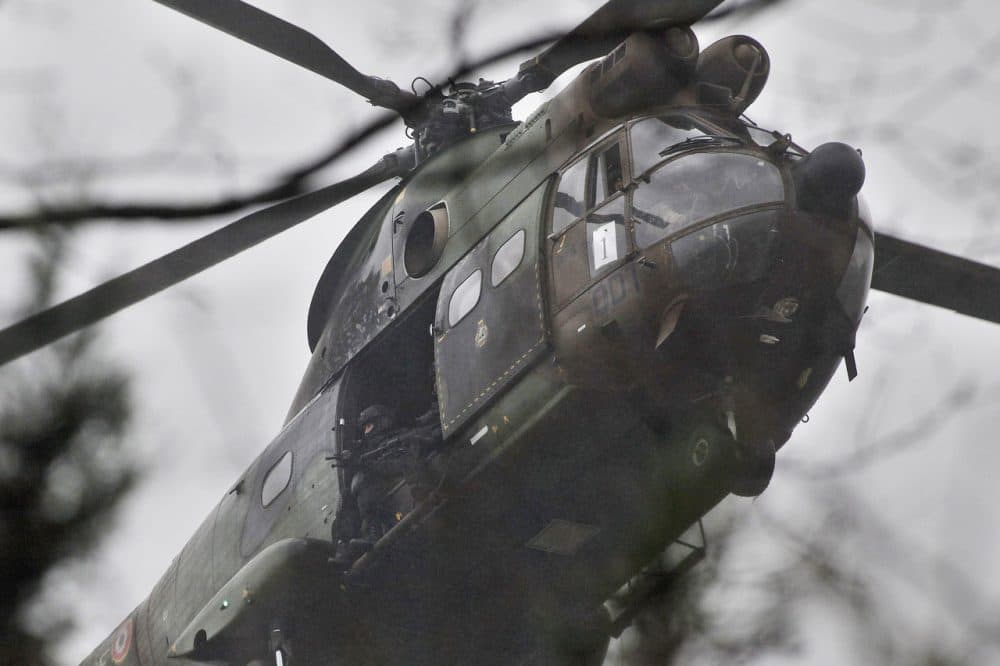Advertisement
Some See Parallels Between France, Marathon Terror Attacks
Resume
Friday: French SWAT teams exchange gunfire with two brothers in a Paris suburb, as part of a manhunt.
Twenty-one months ago: Police exchange gunfire with two brothers in Watertown, the suburb outside of Boston, amid another massive manhunt.
The two shootouts, allegedly connected to acts of terrorism, are separated by time and place, but there are many parallels and lessons to learn from the attacks.
It's not exactly déjà vu but comparisons easily come to mind.
"The similarities are almost eerie," said Massachusetts U.S. Rep. William Keating, a member of the House Homeland Security Committee.
"The fact that the suspects are brothers, they became radicalized, their contact with foreign insurgents, the massive manhunt that sprawled into the suburbs the way it did in Watertown, the tragedy of another police officer being shot and killed, all of those things I'm sure brought thoughts of the marathon and the tragedy home to people back in Massachusetts," he said.
Keating says we shouldn't be surprised by the parallels, as both attacks are homegrown terror.
"There are reasons for the similarities because the greatest threat we have now are people operating as lone wolves, or operating in what people term wolfpacks or small numbers, small groups," he said. "And they're very hard to detect."
Lone wolf, homegrown terrorists don't have to cross borders, says Keating, and they can easily blend in.
But in both the French and Boston attacks, the pairs of brothers had been detected and tracked by their country's domestic and international intelligence agencies. And in Paris, as in Boston, siblings were on U.S. no-fly lists.
It's the fraternal link that can be the critical connection.
"It's absolutely the case how common it is to see siblings in terrorist groups, looking at the Provisional IRA, looking at the Chechen terrorist groups, this is not unusual," said Mia Bloom, a professor of security studies at UMass Lowell and author of the book, "Dying to Kill: The Allure of Suicide Terror."
"This is very common in terrorist groups, where you have brothers, they join together, because at the end of the day an individual may be more likely to disappoint a terrorist group than he is to disappoint a family member," she said. "It's not necessarily just about secrets. It's about commitment level. It's about not changing your mind at the last minute."
Dealing with the threat of homegrown terror will take more than identifying and connecting the dots.
The U.S. Department of Justice has a new program designed to strengthen ties between Muslim communities and law enforcement. Boston is one of three cities receiving federal funding for the program.
This segment aired on January 9, 2015.
